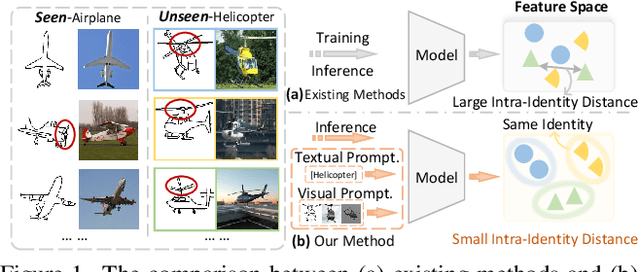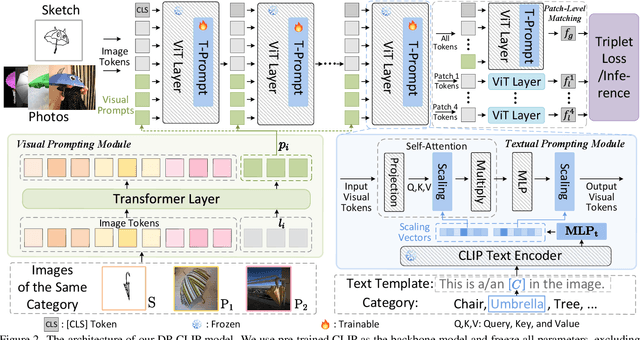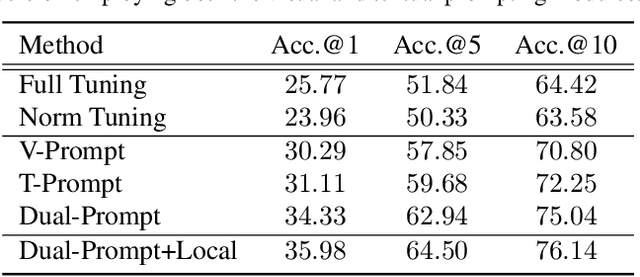Dual-Modal Prompting for Sketch-Based Image Retrieval
Paper and Code
Apr 29, 2024



Sketch-based image retrieval (SBIR) associates hand-drawn sketches with their corresponding realistic images. In this study, we aim to tackle two major challenges of this task simultaneously: i) zero-shot, dealing with unseen categories, and ii) fine-grained, referring to intra-category instance-level retrieval. Our key innovation lies in the realization that solely addressing this cross-category and fine-grained recognition task from the generalization perspective may be inadequate since the knowledge accumulated from limited seen categories might not be fully valuable or transferable to unseen target categories. Inspired by this, in this work, we propose a dual-modal prompting CLIP (DP-CLIP) network, in which an adaptive prompting strategy is designed. Specifically, to facilitate the adaptation of our DP-CLIP toward unpredictable target categories, we employ a set of images within the target category and the textual category label to respectively construct a set of category-adaptive prompt tokens and channel scales. By integrating the generated guidance, DP-CLIP could gain valuable category-centric insights, efficiently adapting to novel categories and capturing unique discriminative clues for effective retrieval within each target category. With these designs, our DP-CLIP outperforms the state-of-the-art fine-grained zero-shot SBIR method by 7.3% in Acc.@1 on the Sketchy dataset. Meanwhile, in the other two category-level zero-shot SBIR benchmarks, our method also achieves promising performance.
 Add to Chrome
Add to Chrome Add to Firefox
Add to Firefox Add to Edge
Add to Edge